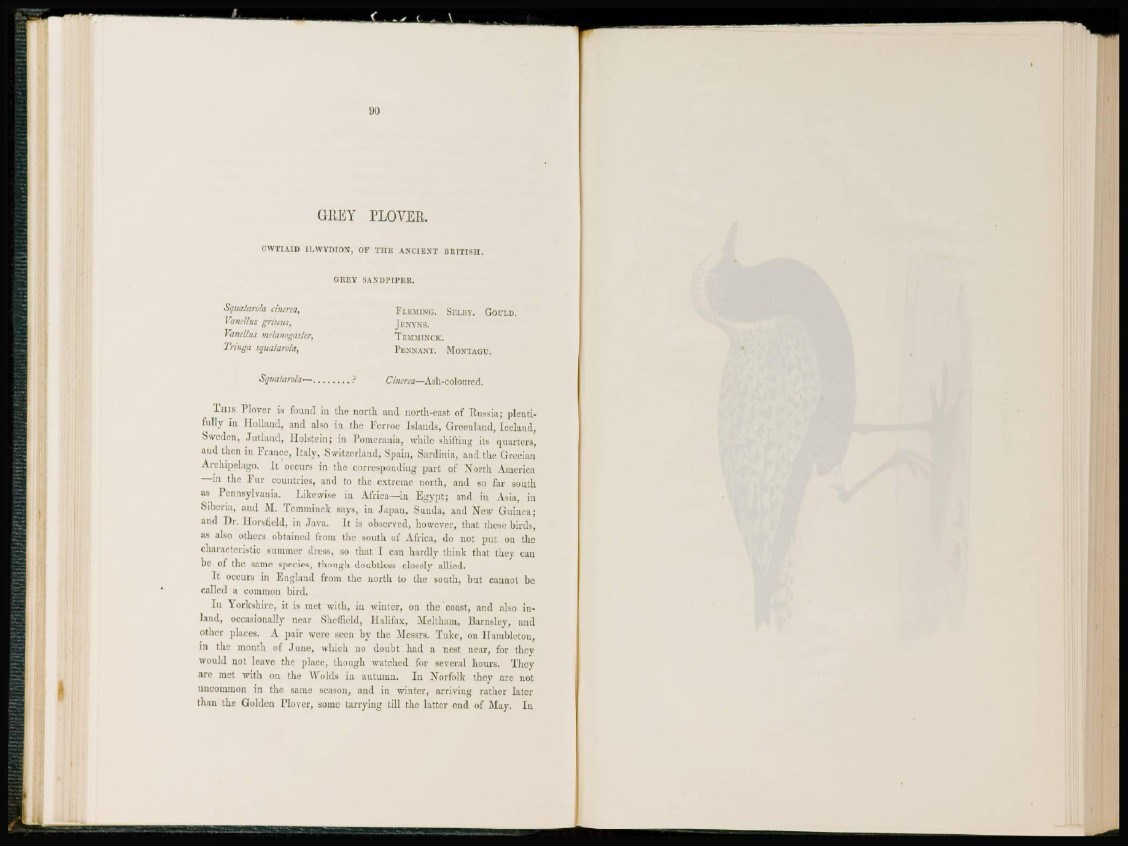
GREY PLOYER.
CWIIAID ILWYDION, OF THE ANCIENT BRITISH.
ULD.
GREY SANDPIPER.
Squatarola c/'ncrea, FLEMING. SF.LHY. GO
Vanellus griseus, JENYNS.
Vancllus meianogaster, TEMMTNCK.
Tringa squatarola^ PENNANT. MONTAGU.
Squniarola— ? Cincrea—Ash-coloured.
THIS Plover Is found in the north and north-east of Russia; plentifully
in Holland, and also in the Fcrroe Islands, Greenland, Iceland,
Sweden, Jutland, Holstcin; in Pomerania, while shifting its quarters,
and then in France, Italy, Switzerland, Spain, Sardinia, and the Grecian
Archipelago. It occurs in the corresponding part, of North America
—in the F u r countries, and to the extreme north, and so far south
as Pennsylvania. I,Ike wise in Africa—in Egypt; and in Asia, in
Siberia, and M. Teinminck says, in Japan, Sunda, and N ew Guinea;
and Dr. Horsfield, in Java. It is observed, however, that these birds,
as also others obtained from the south of Africa, do not put on the
characteristic summer d r e s s , so that 1 can hardly think that they can
be of the same species, though doubtless closely allied.
I t occurs in England from the north to the south, but cannot be
called a common bird.
In Yorkshire, it is met with, in winter, on the coast, and also inland,
occasionally near Sheffield, Halifax, Meltham, Barnsley, and
other places. A pair were seen by the Messrs. Tuke, on Hamblcton,
in the month of June, which no doubt had a nest near, for they
would not leave the place, though watched for several hours. They
are met with on the Wolds in autumn. In Norfolk they are not
uncommon in the same season, and in winter, arriving rather later
than the Golden Plover, some tarrying till the latter end of May. In